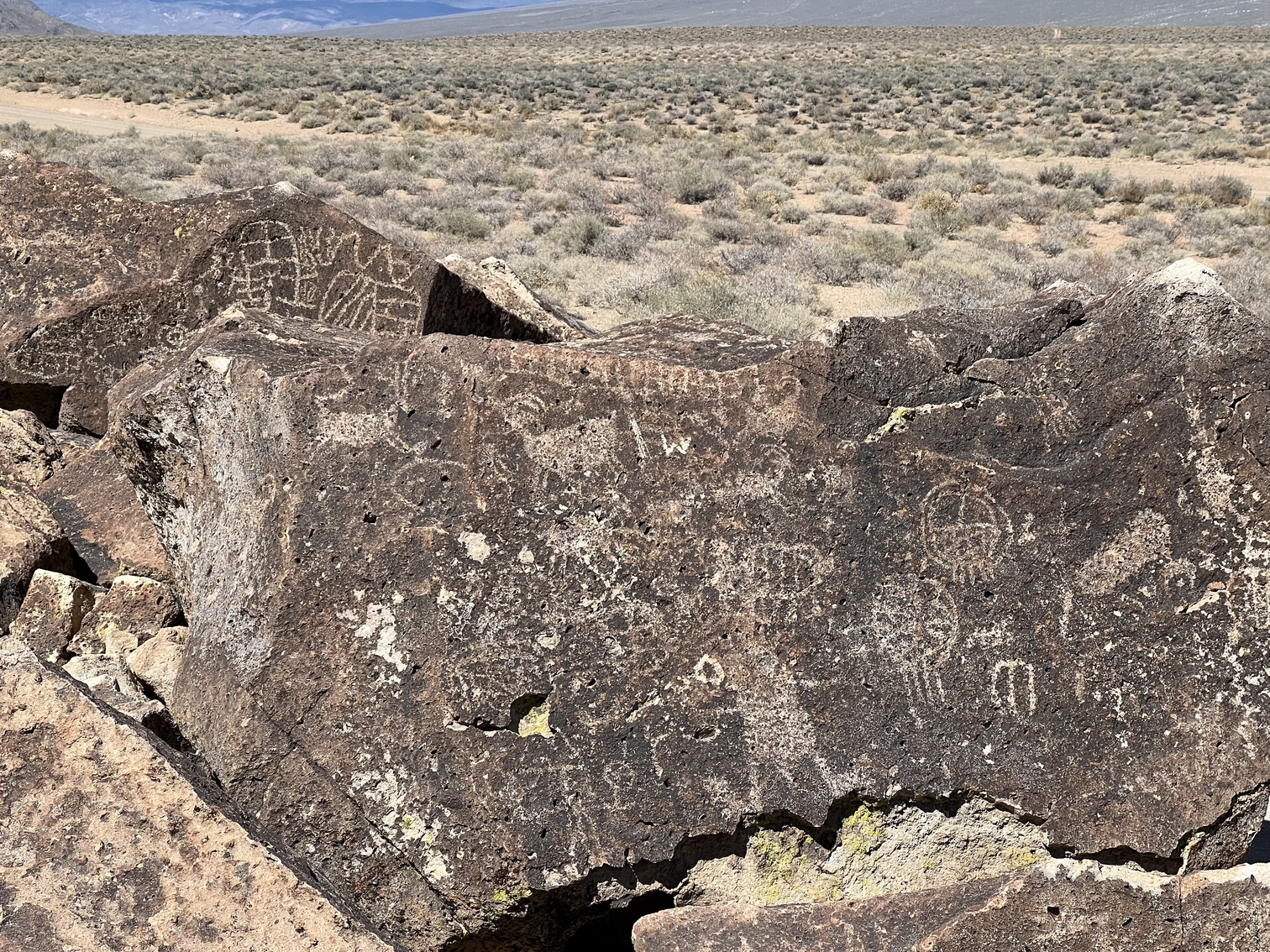Evidence
I am the unbroken field
with outbreaks of blue,
the grasses bending and bowing
to wind, calligraphy in the sand.
I am the sudden burst of blue,
chasing avocets on their long skinny legs
that skitter-skatter along the shore
while water fills tiny crab holes.
I am the crest of sound-water
that crashes and vanishes, erasing
footprints: crab, plover, avocet,
and the barefoot old man in the Bahama-hat.
All evidence of touch and communion
under the rising moon shining on water fades
and returns, pales and brightens, saying
what are you waiting for?
You already know how to see in the dark.
_____________
Laurie Doctor
Review by Jared Pearce
The exquisite turn of the final line, for me, raises this poem beautifully.
Review by Ettore Fobo
Here, the poetess immerses herself in a landscape, almost merging with it, in a panic dimension that allows her to recognize herself as an “unbroken field” crossed by “a sudden burst of blue” in the “crest of sound water,” and in the various animals that follow in these verses – where everything “fades and returns, pales and brightens”: crabs, avocets, plovers whose footprints are erased by the crashing water that vanishes. Even human presence, symbolized by a “barefoot old man” with a hat, belongs to this, ultimately sweet and necessary, evanescence and fatal impermanence. All this seems to define spiritual motions in the filigree of a purified feeling, as well as ”the grasses bending and bowing to the wind”, and the wind itself, which stirs up the sand, is nothing but “calligraphy” writing that incises the landscape with its wild and mysterious elegance. The poetess can thus inaugurate a communion with nature capable of returning to her an enchanted gaze and reminding her of her prodigious talent: “to see in the dark.” All of this reminds me of the famous line by William Carlos Williams: “No ideas but in things,” because one must circumvent volatile conceptualization – the vice of a thought that presumes to explain reality and, moreover, through abstractions – and let the hard crust of things themselves flood in, in all their magmatic crystallizations. It is necessary, with all the force of a wandering and relentless imagination, to wrest the word of the World from what the Italian poet Flavio Ermini calls the “Hegemony of Meaning,” and to make shine the mysterious and exact harmony of sound, image, rhythm, and melody, which constitutes the secret of true poetic experience. Because poetry is above all music manifested in images and does not need to convey any ideas or, worse, messages. Let’s leave messages to telegrams.
Review by Massimo Fantuzzi
Insight. The assertion of words and sounds, the power of speech. The tangible proof that there is a way out of the dark. To see beyond looking and listening beyond hearing; closeness with the infinitely small; contemplation of the infinitely large. Touch and communion. Everything points to a deeper understanding and ownership of our surroundings. A true enrichment and prosperity that will take us to the edge of disappearing and dissolving into the Creation. Not many are prepared to embark on such a journey, an insightful journey of abandonment and vanishing inside the background.
Review by Michael T. Young
I always find carpe diem poems appealing. And this one is marvelously nuanced in its approach. The accumulation of images that depict the ebb and flow, the rise and fall of various moments: “calligraphy in the sand” created and erased by wind, waves crashing and vanishing, “erasing / footprints” is straightforward enough, but these are spoken by a self that is unidentified yet appealing as some universal voice of time or life itself noticing this “evidence” that tells us to seize the day, i.e., “what are you waiting for?” And why, because “you already know how to see in the dark.” Once we reach this point, there’s almost a sense we have been speaking from a kind of Blakean world of the unborn similar to the land of Ulro. But all of creation urges the speaker toward the light by that one word “already;” and this is more than a simple assertion of inevitable death but rather a quiet recognition of its intimate connection to our nature. There is much that could be said about this connection. It harkens to other poems in this tradition that hint at such things, such as Frost’s woods that are “lovely, dark and deep.” That is, there is something appealing in that darkness, it calls to something in us. But like this poem, we turn back to life, the light, and the labor of living, the ebb and flow spoken of in this poem. It’s a good addition to the tradition of carpe diem poems.

